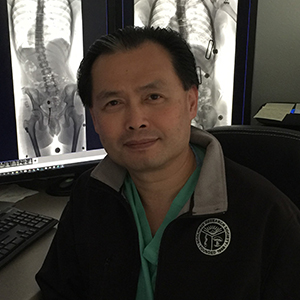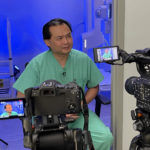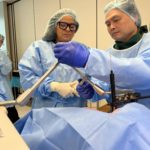A person affected by kyphosis bears a forward curvature of the spine in the upper back area, giving an abnormally rounded or “hunchback” appearance. Kyphosis can occur at any age but is commonly found in older women.
Kyphosis is a curvature of the spine measuring 50 degrees or more on an X-ray. A typical spine can bend from 20 to 45 degrees of curvature in the upper back area. Common types of kyphosis include:
- Postural kyphosis, or postural roundback, is a thoracic kyphosis greater than 50 degrees with normal-shaped vertebrae. This type of kyphosis is flexible and can be improved with stretching and exercises.
- Scheuermann’s kyphosis refers to a form of kyphosis where the vertebrae have developed into a wedge shape. This form of kyphosis is more rigid and can worsen with time and growth. This occurs in one out of every 250 people, with males and females equally affected.
- Congenital kyphosis occurs when there is a difference in shape of one or more vertebrae. This difference is present at birth. The child is noted at birth to have an outward curve of the spine. This curve may become more noticeable with growth.
Mild kyphosis causes minimal issues, but severe kyphosis can cause pain and disfigurement. Treatment for kyphosis depends on one’s age, cause and effects of the spinal curvature.




